Software plays an increasingly vital role in conservation, helping to protect and manage biodiversity through innovative technological solutions. It also facilitates collaboration among researchers, local communities, and governments, empowering them to develop sustainable conservation strategies. However, many of us working in conservation tech don't have the benefit of a large team of software experts to collaborate with or bounce ideas off of. We aim to change that.
This group is for anyone interested in applying software to conservation and wildlife research. Whether you're a developer eager to contribute to conservation or a newbie with valuable data and ideas but limited software experience, this group connects people with diverse expertise. It provides a space for asking questions, sharing resources, and staying informed about new technologies and best practices. We are also committed to supporting technologists and conservationists from the Global South, ensuring that everyone has access to the tools, knowledge, and opportunities to contribute meaningfully.
Our goal is to foster collaboration and avoid "reinventing the wheel" by sharing solutions, whether it's an application, design approach, or a simple script. We also aim to lower barriers to entry by offering mentorship and guidance and providing feedback on technical ideas. This supportive community is a place to learn, connect, and contribute to the advancement of conservation through software. Whether you're looking for software and mobile app developers to help you with your conservation tech needs, have questions about development, are looking for resources, or would like to share your own app, software, or gaming tools, this is the group for you!
Resources
Header photo: Trevor Hebert
Group curators
Wildlife Protection Solutions (WPS)
Software Engineer in Conservation Tech



- 2 Resources
- 15 Discussions
- 10 Groups
Wildlife Protection Solutions (WPS)
Director of Technology at Wildlife Protection Solutions. Primarily focuses on leveraging machine learning and advanced data analytics to combat poaching, monitor biodiversity, and predict environmental threats.
- 0 Resources
- 1 Discussions
- 5 Groups
No showcases have been added to this group yet.
- @Stelios
- | he/him
I am a Software Developer living in Berlin, Germany. Previously studied Informatics (BSc) and Data Science (MSc) in Athens, Greece.
- 0 Resources
- 0 Discussions
- 12 Groups
- @ctjack1109
- | He/Him
I am a graduate student at Purdue University developing low-cost IoT technology to measure wetland methane emissions. This, paired with my undergraduate education in Wildlife and Fisheries Resources, has me naturally drawn to advanced tech coupled with conservation issues.
- 0 Resources
- 0 Discussions
- 9 Groups
- @lvgliarose
- | she/her
Bat Conservation Trust
Research Manager at Bat Conservation Trust
- 0 Resources
- 8 Discussions
- 12 Groups
- 0 Resources
- 1 Discussions
- 6 Groups
- @jguenter
- | he/him/his
Species360 CEO - passionate about using data to care for and conserve species
- 0 Resources
- 0 Discussions
- 5 Groups
linkedin.com/in/brunilda
- 0 Resources
- 0 Discussions
- 1 Groups
- @ColleenEarthScape
- | She/her/hers
- 0 Resources
- 7 Discussions
- 7 Groups
- @kylejhorner
- | he/him
NatureCounts Engagement Coordinator for Birds Canada.
- 0 Resources
- 1 Discussions
- 3 Groups
- @Alawa
- | She/Her
Passionate wildlife and biodiversity conservationist
- 0 Resources
- 0 Discussions
- 24 Groups
- 0 Resources
- 0 Discussions
- 5 Groups
I am a a field biologist and a bat researcher interested in ecology, biodiversity, and conservation of mammals, especially Chiroptera.
- 0 Resources
- 0 Discussions
- 4 Groups
- @weygoldt
- | he/him
PhD student at the Neuroethology Group in Tuebingen interested in data science & quantitative behavior of electric fish.
- 0 Resources
- 0 Discussions
- 4 Groups
In this From the Field interview, we speak to Dr. Raman Sukumar, a world renowned expert on Asian elephant conservation. He shares his thoughts on how technology could be used for mitigating elephant-human conflict, and...
5 April 2017
Are you ready for this year's #Tech4Wildlife Photo Challenge? In anticipation, we're counting down our ten favourite entries from last year. Do you think you can top these?
1 March 2017
The Conservation Leadership Programme (CLP) is a training and capacity building programme that targets individuals from developing countries who are early in their conservation career and demonstrate leadership...
21 November 2016
Technology by itself will not save pangolins or elephants, but it can help make major progress.
14 November 2016
Do you work on conserving Neotropical migratory birds? Do you need funding? Why not apply for a grant from the U.S. Fish and Wildlife Service through the Neotropical Migratory Bird Conservation Act's grant program? The...
8 November 2016
As a visiting research scholar with UNODC, Isla Duporge asked wildlife crime experts about their experiences using remote sensing technologies to combat illicit wildlife and forest activities. In this article, Isla...
7 November 2016
The Independent Evaluation Office of the Global Environment Facility is requesting Expressions of Interest from individual consultants to conduct remote sensing and geospatial analysis for Evaluation of Programmatic...
4 August 2016
The Sustainable Palm Oil Transparency Toolkit (SPOTT) is an online platform providing practical information for stakeholders in the palm oil supply chain. Alexis Hatto from the Zoological Society of London (ZSL) shows...
8 June 2016
Operating the largest tropical forest camera trap network globally, TEAM Network has accumulated over 2.6 million images. How can large datasets coupled with new techniques for data management and analysis provide...
28 April 2016
A team of researchers is using UAVs to photograph tropical forest canopy with the aim of developing low-cost methods for measuring forest quality and directing restoration management. In this case study for the Drones...
27 April 2016
Thousands of papers and reports about flora and fauna are published each year. While peer-reviewed published information is vitally important to conservation organisations, the ever-increasing mountain of information...
5 April 2016
SMART combines a ranger-based data collection tool with capacity building and a suite of best practices aimed at helping protected area and wildlife managers better monitor, evaluate and adaptively manage their...
15 March 2016
August 2025
November 2025
event
December 2023
48 Products
Recently updated products
| Description | Activity | Replies | Groups | Updated |
|---|---|---|---|---|
| Mongabay had a cool feature on an app the Philippine environmental dept is rolling out to combat illegal wildlife trafficking, complete... |
|
Software Development | 4 years 11 months ago | |
| Hello Wildlabs community, The SMART Partnership 2020 user survey is out and we would love to have input from as many SMART users as... |
|
Software Development | 4 years 11 months ago | |
| Hello Software and Mobile apps community, WildTrack (wildtrack.org) has just joined WildLabs and we have a new community forum FIT (... |
|
Software Development | 5 years 3 months ago | |
| Since 2018, Biologists without Borders has been gathering data on illegal ivory sales in the U.S. via internet searches and our... |
|
Software Development | 5 years 4 months ago | |
| For my master's capstone project I'm looking to learn from conservation organizations who have engaged local residents (i.e. not... |
|
Software Development | 5 years 5 months ago | |
| For my master's capstone project I'm looking to learn from conservation organizations who have engaged local residents (i.e. not... |
|
Software Development | 5 years 5 months ago | |
| Hi Alan, Thanks for the suggestion. I ended up using Visual Studio but will take a look at LiveCode for future work - sounds very cool. Thanks, Kas |
|
Software Development | 5 years 6 months ago | |
| URL is www.runtastic.com/run-wild |
|
Software Development | 5 years 6 months ago | |
| Hi I found information about this software A new software for camera trap analysis https://www.zsl.org/zsl-camera-trap... |
|
Software Development | 5 years 8 months ago | |
| I'm part of a citizen science biodiversity project and we ask our citizen scientists to use Kobo Toolbox's webforms to collect field data using a smart phone.... |
|
Software Development | 5 years 8 months ago | |
| I haven't done research on the options recently. But last time I did, from a value perspective, I've been recommending a solid consumer tablet which you can then “... |
|
Software Development | 5 years 9 months ago | |
| Great work Drew thanks for sharing, hopefully, for the 2019 report, we will have a greater presence of Latin American countries adopting SMART as we have ongoing training... |
|
Software Development | 5 years 10 months ago |
Have you used Wildbook?
6 January 2017 4:31pm
Conservation Leadership Programme 2017 Award
21 November 2016 12:00am
Accelerators For Wildlife Conservation Apps?
31 October 2016 5:35pm
16 November 2016 3:26pm
Hi Megan,
It sounds very interesting the app you are developing. I am working for a smaller nature conservation Fund and am trying a partnership with a platform that is also in development and aimed at connecting people and organizations, facilitate update and knowledge sharing and increasing the visibility and donor pool of the organisations. As I said it's still in development but you can take a look if you like www.pifworld.com/eng. I am however also very curious to get to know other (potential) tools that work similar.
It would be great to chat one time to get better acquainted, maybe you can send me your contact details by PM if you'd like to follow up?
Best, Anne Alexandre
17 November 2016 5:08am
Hi Anne,
Thanks for reaching out and sharing what you are working on. I will PM you now.
September Meetup: Gaming for Conservation Impact, Thursday 29th Sept
27 September 2016 10:43am
10 October 2016 9:28am
Thanks Alasdair for signing up! Happy to welcome you as one of our test users. The link will follow in a bit, meanwhile feel free to join our Facebook Play Group to get weekly updates on our process and backstories of the amazing animals we're allowed to work with: https://www.facebook.com/groups/IoEPlay/
Corinna
16 November 2016 2:22pm
Im sorry I missed this event - I hope there will be others like it...
16 November 2016 2:32pm
Hi Karina,
There most definitely will be more events like this one. We are thinking of holding another gaming for conservation meetup in early 2017, potentially in London. Would that be of interest?
Hmm. having looked up where Wentworth institute of Technology is - looks like you're actually based in the USA Cambridge. Do you ever make it over to the UK? Otherwise, maybe we could look into organising something more local to you..
Steph
Carnivore Tracker app to document carnivores in Namibia
1 November 2016 2:59am
15 November 2016 7:09pm
Thanks Karin! Very interesting app. I will ask for permission to review it in my website.
Best
Judit
Kid-friendly wildlife apps
4 November 2016 4:16pm
9 November 2016 11:54am
Hi Katzyna, we have an app called Instant Wild where you can see camera trap images coming in and help identify what is in them - you can take a look/find out more at http://www.edgeofexistence.org/instantwild
Chloe
15 November 2016 4:47pm
Hi Katzyna,
Not an app, but United for Wildlife are releasing a new free online course on the illegal wildlife trade on the 17th that has Vietnamese subtitles and transcripts available. The website with the course is here: http://learn.unitedforwildlife.org/ but the new course won't be live until the 17th. I am happy to send you some further information on this if you would like?
Just let me know!
15 November 2016 6:32pm
Hi katzyna,
Of those I know, there are none that meets the two criteria that interest you. For example, Wildscan allows you to report illegal wildlife trafficking in Asia, but I don't consider it as kid friendly. Maybe WildSense, to save tigers, or even the app of WWF are more suitable. Also you can take a look to Virry, from UK, or QuestaGame, from Australia.
Best,
Judit
5 Smart Technologies That Will Crack Down On Wildlife Trafficking
14 November 2016 12:00am
Neotropical Migratory Bird Conservation Act grants via USFWS
8 November 2016 12:00am
How do Wildlife Crime Experts view Remote Sensing Technologies used to Combat Illegal Wildlife Crime?
7 November 2016 12:00am
Zoohackathon: 'END LOOP - Coding to end wildlife trafficking'
22 September 2016 12:00am
Engaging this community
23 August 2016 8:27am
Request for Expression of Interest for Individual Consultants to Conduct Remote Sensing and Geospatial Analysis
4 August 2016 12:00am
Video: Discover the SMART Approach
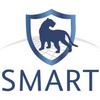 The SMART Partnership
The SMART Partnership
20 July 2016 12:00am
Wildlife Crime Tech Challenge Accelerator Bootcamp
24 June 2016 12:00am
Sustainable Palm Oil Transparency Toolkit (SPOTT)
8 June 2016 12:00am
Internet of Elephants game play survey
16 May 2016 7:44am
TEAM Network and Wildlife Insights
28 April 2016 12:00am
Can UAVs be Used to Measure Forest Quality?
27 April 2016 12:00am
ContentMine: Mining Helpful Facts for Conservation
5 April 2016 12:00am
Games for change Climate Challenge: A $10,000 game design competition
17 March 2016 2:03pm
4 April 2016 9:33am
Hah! I just logged in to post this. I talked with the G4C people the other day. Thanks fo beating me to it.
The Spatial Monitoring and Reporting Tool (SMART)
15 March 2016 12:00am
Ecotech Grants from the Captain Planet Foundation
18 February 2016 12:00am
Upcoming Courses on Coding
10 February 2016 12:00am
Playing with Complexity: Games and Systems Thinking
13 January 2016 12:00am
Can gaming help conservation? - Wildsense Tiger App
27 November 2015 11:01am
28 December 2015 7:09pm
Hi Steph,
Thanks for your message. I would be delighted to answer your question about Wildsense.
You are correct that our aim is to do a lot more than raise awareness and engange citizens with our Wildsense Tigers game.
We are using images from a range of image sharing websites that have been uploaded by people online and publicly shared. Each photograph contains valuable information that often includes the time and location that the photograph is taken. If we can understand when a photo was taken, where it was taken, and the individual animal in the photograph, then we can start to build up a picture of the movement of individuals. We are benefiting from people power from the users that are both indirectly uploading photographs online and also directly interacting with our Wildsense game. We are combining this with computing power with our data analysis, computer vision and machine learning software.
We are doing this experiment on a large scale and we believe that "the wisdom of the crowd" will enable us to gather and analyse enough information so that we can build an accurate picture. We started with wild tigers and our plan is to create a platform that can be used for other species as well. We are working on other animals already behind the scenes.
I hope that answers your question.
Best wishes,
Aaron Mason
11 January 2016 1:29pm
Hi Aaron,
It's a great concept of using gaming for the benefit of conservation, but I do have one big question about Wildsense and tigers. Since poaching is one of the main threats to the 3,000 or so remaining wildl tigers, there are great risks involved with publicizing the location and timing of any tiger sightings.
Furthermore, this approach can probably only work for Bengal tigers, since other tiger species, such as Sumatran and Malayan, are very rarely sighted, even by the most dedicated conservationists ( or poachers), as their jungle habitat is so dense. For Bengal Tigers, there are already ventures for online monitoring and identificaton, such as Tigernation.org.
Good luck with your project. Barbara from BiodiversityBusiness.
11 January 2016 6:33pm
Hi Barbara,
You are right in that cyberpoaching is becoming an increasing risk. I have seen various cases where information posted on social media has provided too much information and then ended up in the wrong hands (e.g. http://www.army.mil/article/75165/Geotagging_poses_security_risks/).
We need to be careful about the accuracy of information that is disclosed. Providing an approximate time and location seems to be the most popular adopted approach.
Hacking is another issue. For example, I have seen research demonstrating the potential to gain unauthrised access to GPS collar data.
Our main focus has been the Bengal Tiger but we want to see how much we can learn about other tigers as well. Our end goal is to support a range of animal species.
P.S. I am pleased that you are aware of http://www.tigernation.org - I co-founded it :)
Mobile Phone Reporting for Rapid Wildlife Health Response in Uganda
22 December 2015 12:00am
Gaming for Good: Minecraft and Quiz Up
3 December 2015 12:00am
Case Study: Gaming for Good with Runescape and Angry Birds
26 November 2015 10:55am
Gaming for Good: Runescape and Angry Birds
25 November 2015 12:00am
From Data Collection to Decisions
6 November 2015 12:00am



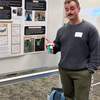

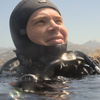

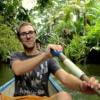





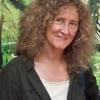
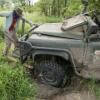


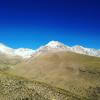






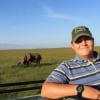
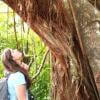




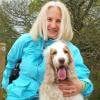
15 November 2016 7:54pm
Hi Judit,
She sounds like a great resource. I will be sure to reach out.
Thank you,
Megan